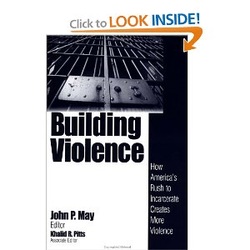Dr. Williams used her juice (her influence) to get approval for a panel of four guest speakers to come into the prison and speak before the men. The panel consisted of Van Waller, Larry Bluford Jr., Deon Price, and Evelyn "The Heart Lady" Polk.
It was my first time attending a symposium in a prison. As I walked in I noticed that there were professional-looking programs laid on every chair. The programs gave me helpful information about each of the speakers.
The first speaker was Van Waller. Van is a personal empowerment speaker, author, and certified pastoral counselor. His message to us was: "Don't stop trying. Keep planting seeds. Have faith. Faith is a resource that can open up other resources all around us."
Van was followed by Larry Bluford Jr. Larry, to my eyes, looked to be the hippest member of the panel. He was definitely the youngest. He stuck out. He had a muscular build and wore a stylish Kangol hat. A one-time prisoner himself, he knew how to relate. His story included how, after coming out of prison, he implemented his re-integration plan. He told us how, after serving five years in prison and missing out on a significant portion of his children's formative years, he rebuilt the relationship with them and later guided his family through a violent crisis that tested his rehabilitation. At that moment of testing, he said God spoke and told him to forgive, and teach his family to forgive.
The incident, and Larry's response, did not go unnoticed in his community; it sparked a local anti-bullying movement. Larry's key message to us was: "Don't give up. It's not over. Prepare for the future and don't leave prison without a plan."
Larry was followed by Deon Price, who brought to the symposium humor as well as wisdom. Deon is a youth lifeskills coach, an author, comedian, the founder & host of of an online webshow "This Youth Generation," and columnist of "This Generation" which runs in several publications including the Los Angeles Sentinel. Deon's message was: "Learn not to allow negative elements to influence you but to make the necessary adjustments in life."
The final speaker and sole female panelist was Evelyn "The Heart Lady" Polk. From looking at the program, I found out she was something of a celebrity: along with being a LMFT (Licensed Marriage and Family Therapist), Ms. E is founder of Talk To Me Counseling and director of For A Child's Heart Inc., a nonprofit which provides counseling for foster and fost-adopt youth and their caregivers. She is also the author of three books and the producer & host of two shows ("Visions For A Child's Heart," which airs on Public Access Television, and "Heart Talk with Ms. E" an internet radio talkshow).
The Heart Lady brought spirituality and a woman's touch. I am glad she came and moreover I appreciate the fact that Solano Prison welcomed all of the motivational speakers. Looking around the gym during the event, I saw each of the speakers had an impact on the inmates. The next symposium is scheduled to happen in July and I will make every effort to attend that one as well.
I don't want to miss out on anything that could lift my spirit!


 RSS Feed
RSS Feed
